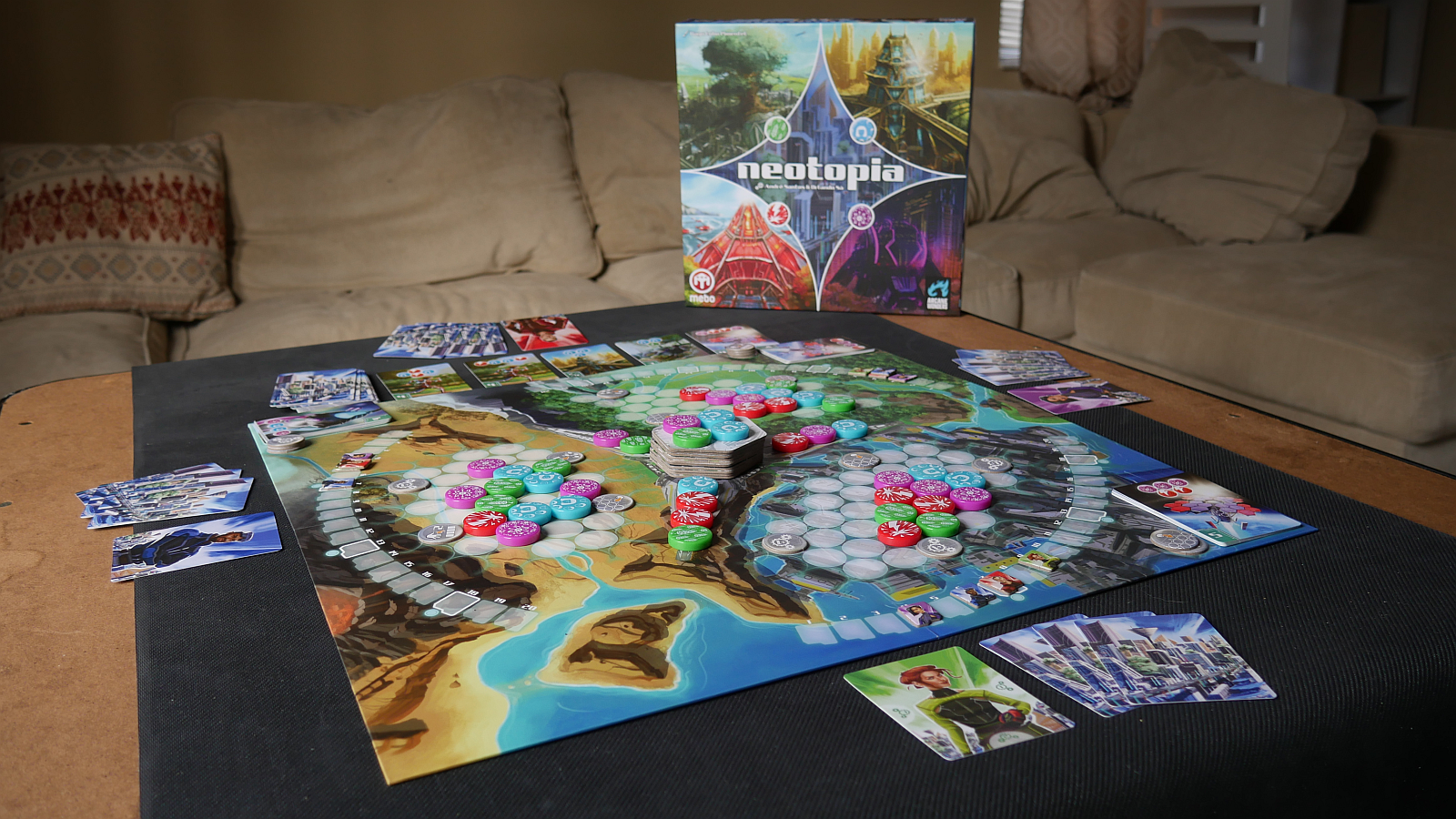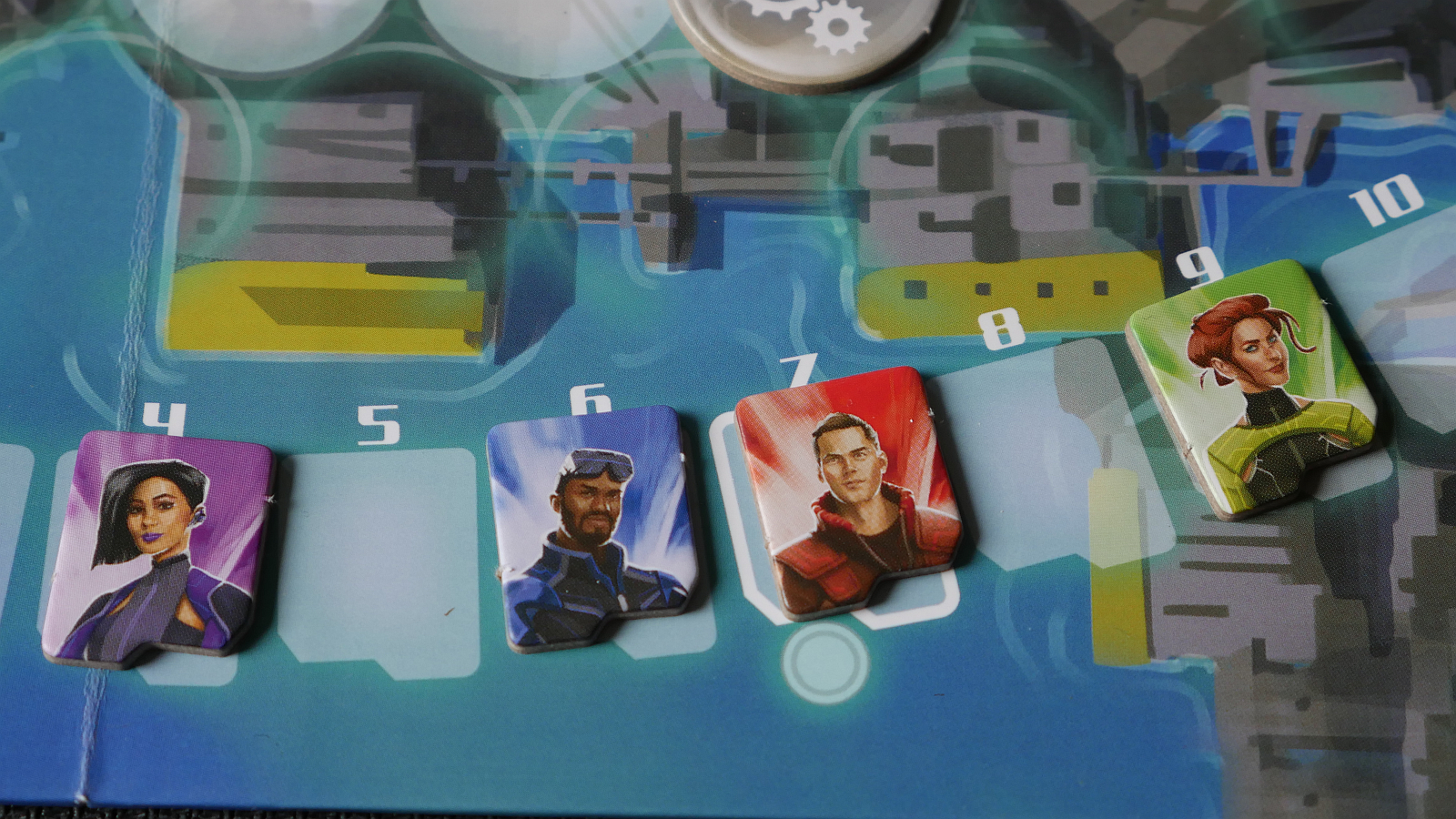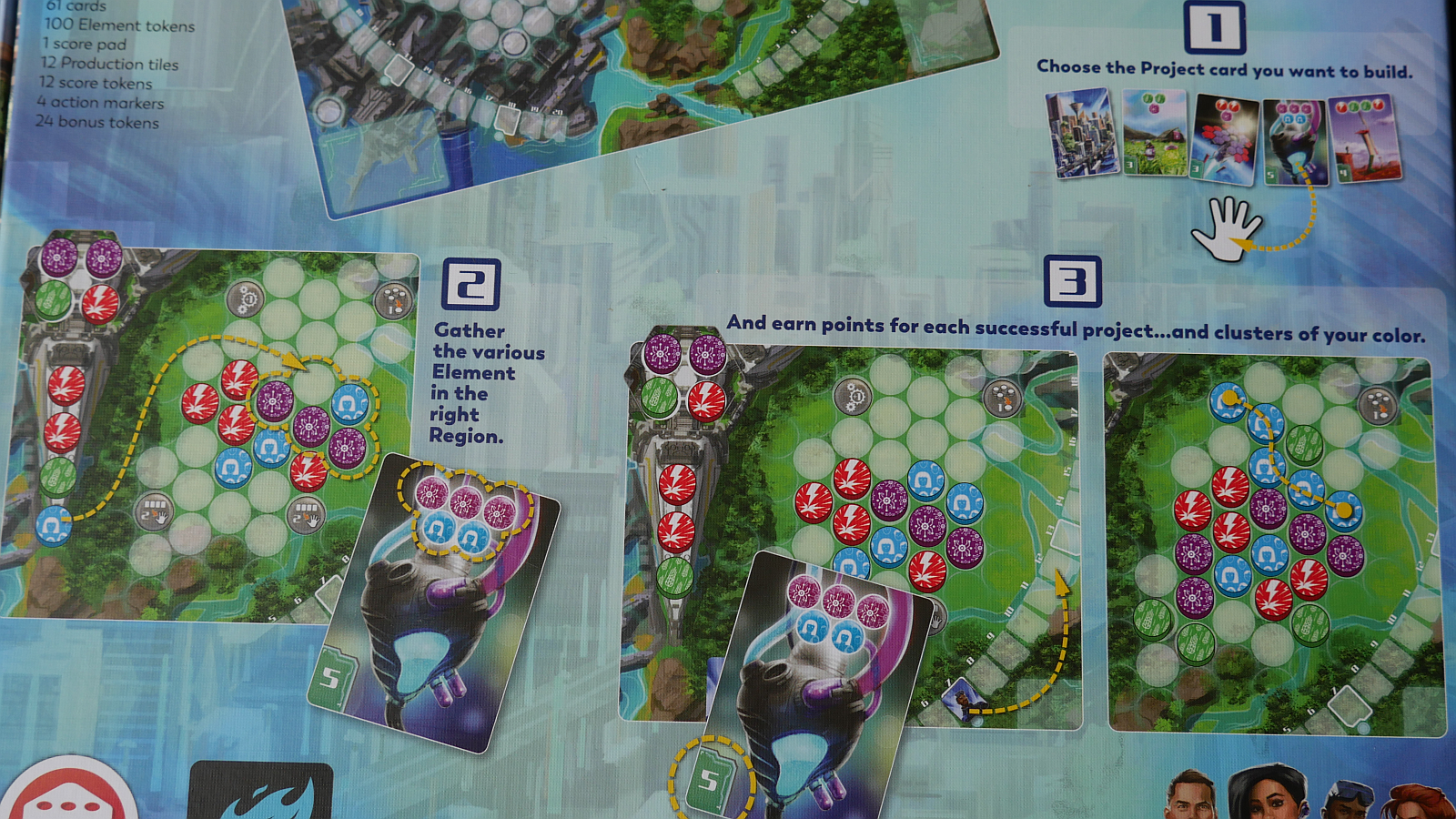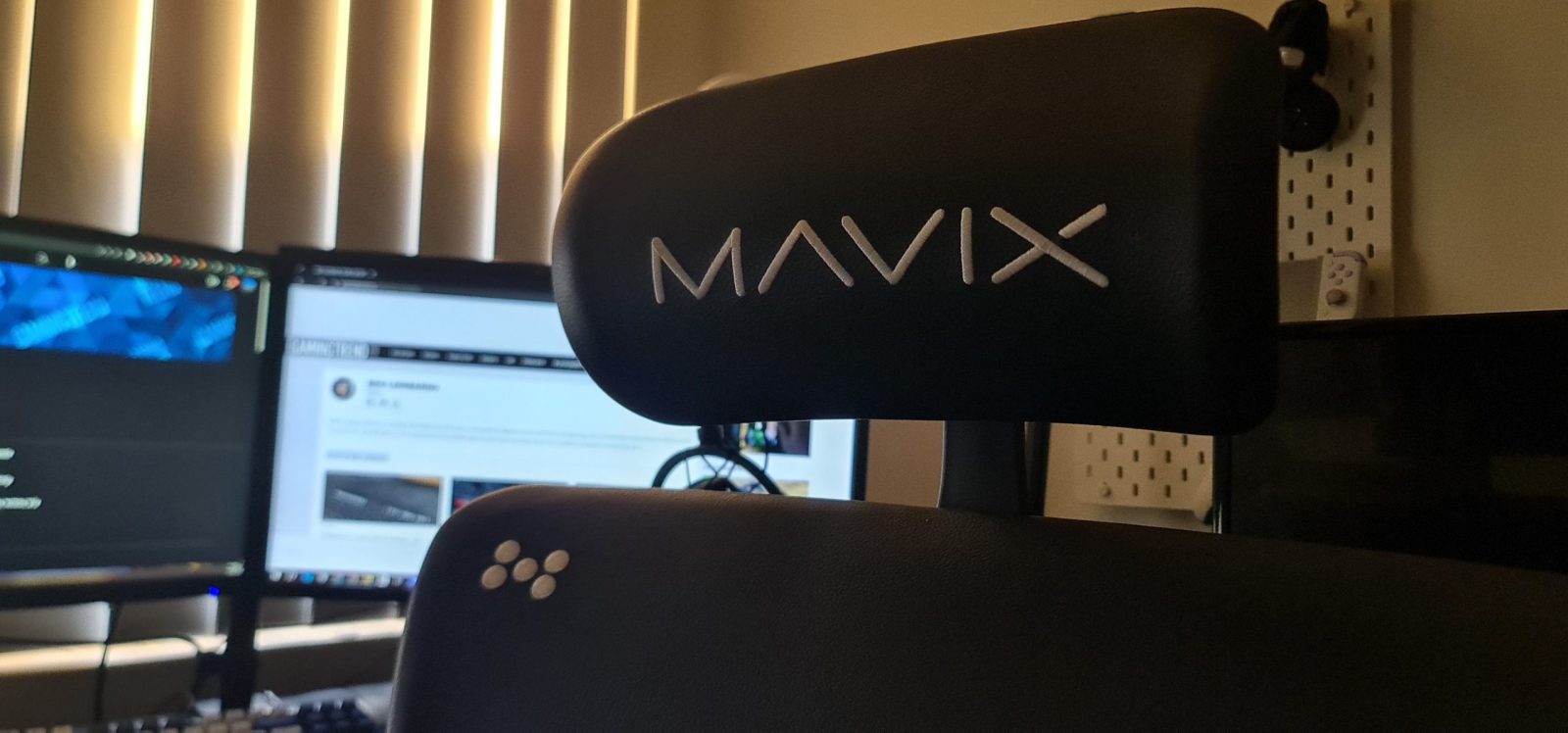Neotopia, published by Arcane Wonders, is a family weight game about creating patterns in an expanding city in order to score the most points by the end of the game. The rules couldn’t be easier and it evokes the feeling of family classics like Ticket to Ride. Sounds interesting? Let’s get started.
Overview
Thematically, Neotopia is about entrepreneurs building the most advanced city in the world. “A city that can sustain itself in terms of energy and food production, that is a cluster for scientific development where man and nature bond in an integrated and symbiotic way.” Sounds pretty cool right? The gameplay has nothing to do with that. As far as tacked on themes go, it’s not the worst, and does at least make sense for the abstracted gameplay.

Neotopia mid game
Setting up a game of Neotopia is super quick. A stack of tiles goes into the middle of the board, one token of each color is placed on the tile stack and in each factory, the market deck is shuffled, bonus tokens are placed on their colored spaces, players place one starting tile token each and you’re ready to go.
On their turn, players will take 3 actions consisting of two possible choices. You can draw a card from the market row or deck and you can move a tile from a factory to one of the adjacent city zones. Those actions can be taken in any order and any combination. Bonus tokens that are collected over the course of the game by placing buildings on top of them can be used for various extra actions, but only one per turn.
As factories are emptied, the building tokens in the center will fill in the factory. Then a new tile is flipped in the center which shows what color buildings will come out next. The center stack acts as the game’s round timer and when it runs out, one more round is played and the game ends.

Round timer and factories
Points are scored by matching patterns of buildings to the Project cards in your hand. If you place a building that completes a pattern, you score the project in that specific region and go up on that region’s score track. The only restriction is that that previously scored card in that region cannot have the same artwork on it. The city is meant to be integrated in a symbiotic way, remember? In game terms, it means you can’t chain together similar cards because that would be too easy.
Each of the three city zones has its own score track. End game scoring consists of adding your two highest score zones together and then multiplying your third zone score by three before adding it to your total. This encourages the players to try and balance their scores among the tracks to get the highest possible multiplier on that third zone. Finally, you score one point per token of your color in the largest connected cluster in each zone and three points per leftover bonus token. Highest score wins.

Score track
Decision space
The “game” in Neotopia is all about balancing your score in each zone while denying scoring opportunities for your opponents. Every game I played was pretty close in score so single decisions can really matter. The game starts out pretty simple without many decisions to make but as the zones begin to fill up your choices have more weight. It becomes very important to monitor the market row for cards that can be easily scored. Leaving a card for the next player to effortlessly score could cost you the game. It’s just as important to pay attention to the potential patterns that are developing. Maybe you have multiple options for where to place your purple building to finish off a purple and blue tech project but one choice lets you interrupt the big red and green pattern that your friend was working on the past two turns. Small decisions like that can have a large impact when scoring is so tight. Putting that extra strategic thought into what is a relatively simple game is what gives Neotopia some staying power.

Project card market
Components
The components in Neotopia are good. The board is a bit large for such a simple game but that is what allows the buildings to be as large as they are and patterns able to be seen across the board. Which is kind of important since forming patterns is the main mechanic to score points. Readability of everything is very clean and clear. Card quality is standard for a modern board game. Nice and sturdy and the artwork is vibrant. Besides an initial shuffle at the start of the game, the cards aren’t abused too much during play so you probably don’t need sleeves for this one. The main highlight is the buildings. Arcane Wonders could have easily gone with cardboard tokens here but instead we get these delightful acrylic tokens. They are wonderfully tactile in a game where all you are doing is placing these tokens onto the board. However, they don’t taste very good, despite their resemblance to delicious hard candies.
Final Thoughts
Neotopia is a great entry in the family weight games category. The rules can literally be learned from the back of the box and gameplay is simple and snappy. The gameplay is pretty abstracted from the theme but the chosen thematic integration with the artwork is nice to look at and adds just enough to hold the gameplay together. Playing Neotopia with two players has a bit more tension. The opportunity to block the other player with building placements or deny cards in the market is much more impactful than at higher player counts. Four player games are much more about maximizing the opportunity presented to you on your turn. You may be able to impact other players with your turn but with four people all doing the same things, luck seems to play a larger factor.

All the rules on the back of the box
I referenced Ticket to Ride at the start of this review. It’s an extremely popular and well selling game that I just happen to find completely boring. You know what they say about opinions… that’s just mine. In both Ticket to Ride and Neotopia the player is collecting goals, be it rail destinations in TTR or Project cards in Neotopia, and then placing pieces onto a shared board in an attempt to score their collected goal cards. Both games are easy to teach and quick to play. For me, Neotopia fills the same niche that TTR sits in but with much more engaging turns. Drawing train cards over and over again until you get lucky enough is a drag. Neotopia gives the player something to accomplish on every single turn. It’s rare in Neotopia that you won’t score at least one card on a turn. Chaining the emptying of a factory into the piece you needed to complete a pattern which gives you a bonus token that leads into a second pattern is so much more satisfying than laying down the six train route you’ve been saving up for the past 15 minutes. Our brains crave patterns and Neotopia is all about searching for and creating just that. It just works. I won’t say TTR is a bad game, it’s just not for me. If you are searching for a family weight game maybe think twice and give Neotopia a shot.
A life long video gamer, Mark caught the Tabletop itch in college and has been hooked ever since. Epic two player strategy games are his favorites but he enjoys pretty much everything on the tabletop, just no Werewolf please. When he gets a break from changing diapers and reading bedtime stories he can usually be found researching new games or day dreaming about maybe one day having time for a ttrpg. Some of Mark's favorite games are Star Wars: Rebellion, A Feast for Odin, and Nemesis.

Neotopia’s simple design allows the whole family or those new to hobby board gaming to get playing in minutes without being overwhelmed by stuffy rules and complex mechanisms. Turns are fast and more engaging than similar games due to the pattern building at the core of the gameplay.
PROS
- Deluxe building tokens are fun to play with
- Teach is really 5 minutes
- Entry level game but still engaging for experience gamers
CONS
- Requires a fairly large amount of table space
Unless otherwise stated, the product in this article was provided for review purposes.
See below for our list of partners and affiliates:

 4 months ago
151
4 months ago
151








